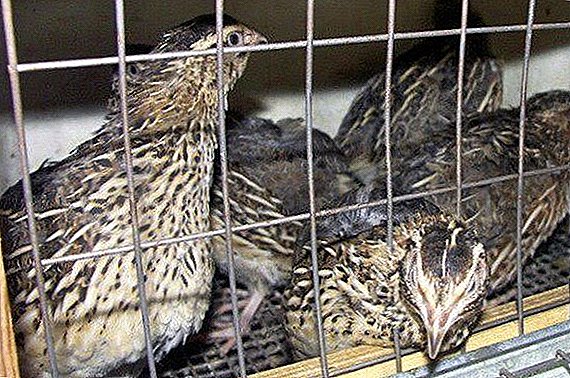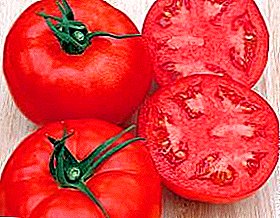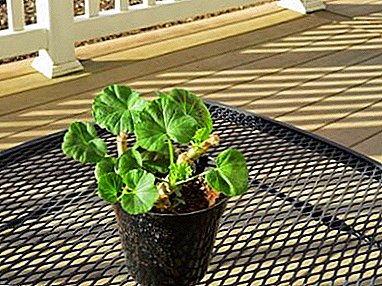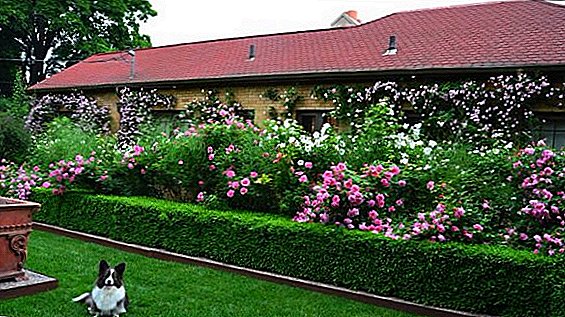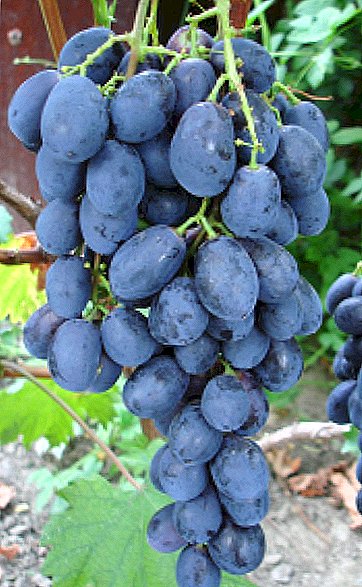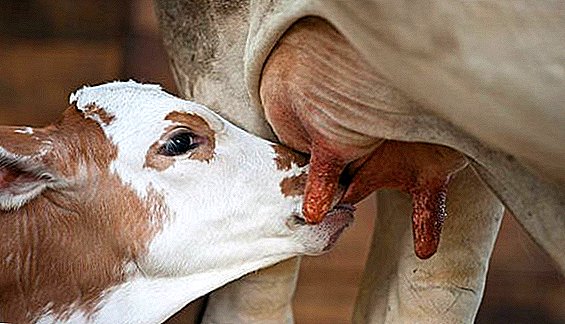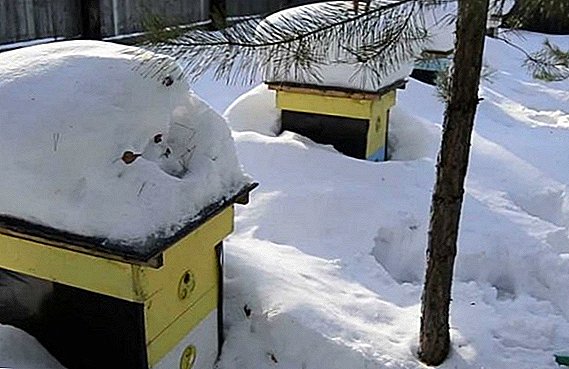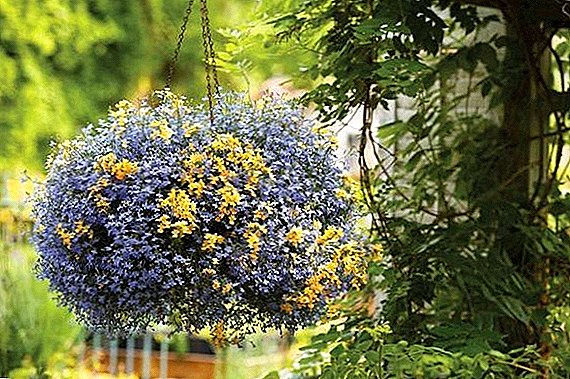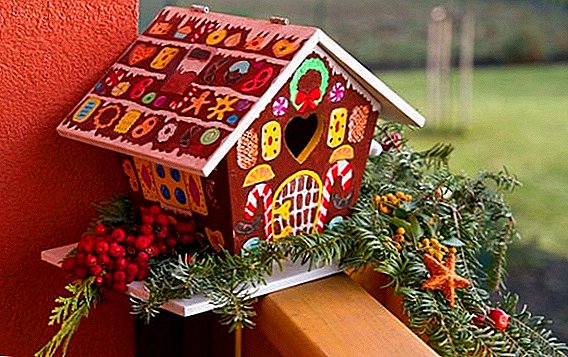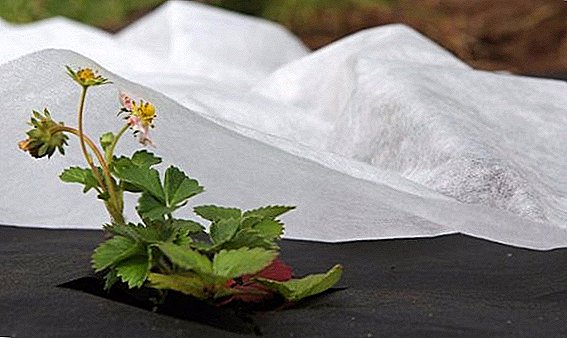 Today, many gardeners use various covering materials on their plots. But few people know about such a shelter as a spunbond, and even more so, few people will say what it is and will call the areas of its application. At the same time, time does not stand still and manufacturers regularly improve product quality, expanding the possibilities of its use.
Today, many gardeners use various covering materials on their plots. But few people know about such a shelter as a spunbond, and even more so, few people will say what it is and will call the areas of its application. At the same time, time does not stand still and manufacturers regularly improve product quality, expanding the possibilities of its use.
What is spunbond
To understand what spunbond is, you need to familiarize yourself with its manufacturing technology. This material is obtained from molten polymer, the fibers of which, when released into the air flow, fit into the canvas.
As a result of this process, a durable and wear-resistant material is obtained, which has found its application in many industries, including agriculture. In order for the spunbond to be used under ultraviolet for a long time, a melt of stabilizers is included in the agrofiber.  In horticulture and horticulture, covering materials are used spunbond with certain technical characteristics, the density of which depends on the purpose and is 17-80 g / m2. This material can be used both in open and protected ground.
In horticulture and horticulture, covering materials are used spunbond with certain technical characteristics, the density of which depends on the purpose and is 17-80 g / m2. This material can be used both in open and protected ground.
Spunbond is used for such purposes:
- Acceleration of soil warming for early shoots.
- Protect the soil from drying out, which saves on watering.
- Protection of various crops from severe frosts, which is especially important for plants with poor winter resistance.
- Providing optimal balance of day and night temperatures.
- Protection against diseases and pests.
Moreover, the use of spunbond is not limited to these areas.
Did you know? The idea of using a film that does not cause overheating and breathes arose long ago. However, things did not go beyond experiments. For the first time non-woven covering material appeared in the 90s of the last century and quickly found application in agriculture.
Material properties
Spunbond has a rather dense structure, which helps to create a microclimate that is comfortable for plants, ensures an even distribution of moisture, maintains an optimum temperature and ensures a constant air circulation.
This agrofiber freely passes moisture, and the material from the water does not become heavier and does not damage even the youngest and weakest shoots. In addition, low weight allows you to cover the entire area, without exerting pressure on the plants and not interfering with their natural growth.  The main technical characteristics of spunbond include:
The main technical characteristics of spunbond include:
- good air permeability (the lower the density, the more intense the air exchange);
- homogeneous structure (allows you to evenly distribute moisture and heat, maintain a constant microclimate);
- transparency (varies depending on the application);
- high thermal insulation characteristics;
- low electrical conductivity;
- small weight which even young plants do not oppress;
- high strength (10-600 g / sq.m), resistance to abrasion and crushing (the ability to maintain shape for a long time);
- high breaking load (stored in both dry and wet);
- resistance to high and low temperatures, as well as to adverse atmospheric phenomena (properties do not change at temperatures from -55 ° C to + 130 ° C);
- resistance to mold and putrefactive bacteria;
- passivity to various chemical compounds;
- non-toxic.
Important! Spunbond properties may vary depending on the purpose and manufacturer.

Benefits
There are several reasons why it is better to use spunbond, but not the usual plastic film:
- This agrofibre can be laid directly on the plants without worrying about the supports.
- Low price. Even the seemingly expensive expensiveness will pay off for the season.
- Spunbond perfectly protects the soil from overheating. All this is due to the fact that the soil under this material heats up slowly. This quality for hot regions will be invaluable.
- Under this fiber culture economically consume moisture.
- Spunbond is the best material for today to help protect plants from freezing.
- Allows you to accelerate the maturation of crops (fruits ripen at least a week earlier).
- It reduces the need for pesticides (for example, herbicides).
In addition, spunbond perfectly protects plants from pests and dust.
Important! In order to protect cultural plants from parasites, the beds should be covered immediately after sowing or transplanting.
There are other agro-materials, which are advertised as analogs of spunbond, practically repeating its characteristics. But it is important to know how other materials (for example, lutrasil) differ from spunbond. Despite the mass of positive characteristics, lutrasil does not allow air and moisture and is not able to delay UV radiation.
Views for the agricultural sector
Spanbond is actively used in agriculture and is considered an indispensable assistant. Today such are known varieties of this nonwoven material:
- Covering. Unlike polyethylene, this material transmits light, water and air, thus creating the necessary microclimate. And you can water the plants directly through the agrofiber. The method of application is quite simple: the material is spread directly on the plants, straightens and presses along the edges. As the plants grow, they themselves raise the spunbond. Protects from small frosts, insects and pests, precipitation.
- For greenhouses and mulch. A more durable material that covers the ground is used to protect the fruit from contact with wet earth. Such mulching saves plants from weeds and contributes to a successful wintering of the root system.

For the cultivation of seedlings or early greenery perfect compact arched cover-greenhouse "Snowdrop" with the use of spunbond.
On the popular types of spunbond and its purpose in agriculture will tell following table:
| Type of agrofibre / density, g / sq.m. | Functions |
| White / 17 | Protects crops from bad weather, well passes light and moisture. |
| White / 30 | Protects from spring frosts and hail in the summer. |
| White / 42 | It serves as a coating for greenhouses and greenhouses, provides high light transmission and thermal insulation. |
| White / 60 | It serves as a covering for greenhouses in regions with an unfavorable climate, protects from hail, snow, strong gusts of wind, it is possible to wrap seedlings for the winter. |
| Black / 50 | Protects from frost, provides rapid warming of the soil, inhibits the growth of weeds, serves as a barrier against the contact of berries with the ground. |
| Black / 60 | Provides high protection against low temperatures in the springtime. |
| Two-layer color | Combines the quality of mulch and covering material. |
| Foiled | Contributes to the revitalization of the growth process due to the reflection of sunlight. |
| Reinforced | Differs in the increased density, it is used for a covering of hotbeds and greenhouses. |

Important! Spunbond protects plants better than glass, breaths and costs less.
Application at any time of the year
This environmentally friendly agrofibre can be used effectively on the site throughout the year.
Spring
In the spring, thanks to the optimum density, the spunbond protects plants from adverse weather conditions and sudden night frosts. However, this material makes it possible to plant seedlings or start sowing ahead of schedule.
Will protect spunbond young plants from birds, rodents, insects and other pests. In addition, even in arid regions, with this material it is possible to grow plants that cannot absorb moisture in open ground.
Summer
With the onset of summer, spunbond will serve as an excellent mulching material. At the same time, it will retain moisture and save the root system from overheating. Moreover, this agrofibre will slow the growth of weeds and protect cultivated plants from dangerous pests.
In addition to textile material, organic elements are also used in mulching: compost, sawdust, hay and straw, peat, green manures, mowed grass, bark, rotted leaves, needles.
Using spunbond when growing gooseberries, blackberries, strawberries, strawberries, currants will help protect these crops from various diseases (gray rot) arising from the contact of the fruit with moist soil.
Autumn
In the autumn period, spanbond does not lose its relevance. It can be used for:
- protection from wind, hail, frost and other adverse weather conditions;
- plant germination;
- extension of daylight hours and, consequently, the fruiting period.
In addition, this material will serve as a kind of snow cover in late autumn, protecting crops from low temperatures.
Learn more about such covering material as agrospan.
Winter
In winter, the spanbond will also serve faithfully:
- will provide plants with protection from freezing (strawberries, strawberries, winter garlic, etc.);
- it will replace snow with little snow in winter, and in the snow-covered time it will not break even under a thick layer of precipitation;
- protects plants from the formation of ice crust after thaw;
- prevent the roots from bulging.

Manufacturers
Spunbond today is widely represented in our country and its production is mastered by many companies.
Leading brands are:
- Lutrasil (Germany);
- Agril (France);
- Agrin (Ukraine);
- Agrotex (Russia);
- Plant Protex (Poland).
As you can see, new engineering solutions can significantly simplify the work of the agricultural producer and facilitate the work of summer residents. Such an innovative material, like a spunbond, will allow not only to get a good harvest in the current season, but also to preserve plant germination next year.


